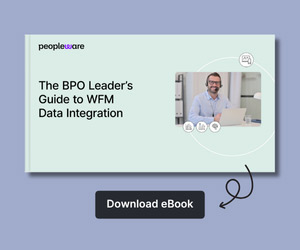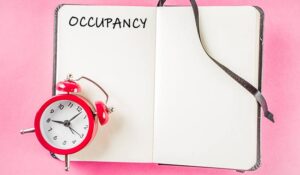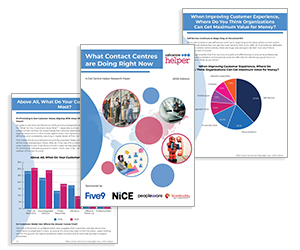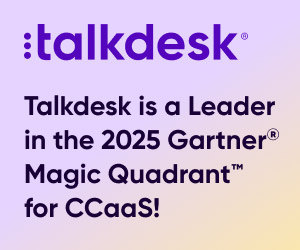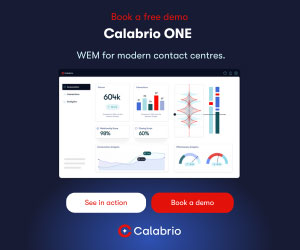Keeping your contact centre running smoothly takes more than just staffing to demand, it’s about managing the rhythm of work itself. That’s where occupancy comes in.
In this article, we explore how to measure and manage occupancy across channels, what “good” looks like, and practical tips to keep performance and wellbeing in balance.
What Is Contact Centre Occupancy?
Occupancy is a foundational contact centre metric that reflects the percentage of time agents are actively engaged with customers or completing after-contact work, compared to their total available time. In simple terms, it tells you how “busy” your agents are.
However, occupancy isn’t just about activity, it’s about efficiency, balance, and sustainability. Too high, and agents can burn out. Too low, and you’re wasting valuable resources. It’s a fine line between optimal productivity and agent wellbeing.
Occupancy is often confused with utilization, but they’re not the same. Utilization measures how much of an agent’s paid time is productive, while occupancy focuses only on the time they’re logged in and available for handling work.
Understanding occupancy is essential to keeping your operations smooth and your workforce healthy.
How Do You Calculate Occupancy?
The standard formula is:
Occupancy = (Total Handle Time ÷ Total Logged-In Time) × 100
- Handle Time includes talk/chat time plus any related after-call work (ACW).
- Logged-In Time is the total time agents are available, excluding breaks, training, and meetings.
For more on calculating occupancy, with examples, read our article: How to Calculate Occupancy in the Contact Centre
Which Occupancy for Which Channel?
Different contact channels operate at different speeds and expectations – so your occupancy targets should reflect that.
Voice
Voice interactions are real-time, high-pressure, and emotionally demanding. Agents can’t multitask in the same way they can with digital channels.
Recommended Occupancy: 75–85%
This allows agents time to breathe between calls, reduces burnout, and ensures availability for sudden spikes in demand.
Live Chat & Messaging
Agents often handle multiple chats simultaneously, and messages may arrive with pauses in between, creating natural flexibility.
Recommended Occupancy: 85–90%
This higher range reflects increased efficiency, but also requires close monitoring to avoid mental fatigue from context switching.
Email & Back Office
These channels aren’t real time and don’t demand immediate response, so agents can focus deeply without interruptions.
Recommended Occupancy: 90–95%
That said, sustained high occupancy here still requires workflow balance to avoid rushed or low-quality responses.
The Risks of High and Low Occupancy
Both ends of the spectrum can signal trouble and lead to long-term issues if left unchecked.
High Occupancy (90%+ on voice)
- Agents feel overwhelmed, increasing stress and emotional fatigue.
- Higher risk of mistakes or poor service due to mental overload.
- Leads to agent churn, absenteeism, and burnout.
- Training and coaching time often gets sacrificed.
Low Occupancy (under 70%)
You’re paying for time that isn’t being used productively.
- Indicates overstaffing or inaccurate forecasting.
- Agents may feel underutilized or disconnected from their role.
- Service levels may still be poor if occupancy isn’t the issue.
Ultimately, your goal is a healthy, sustainable rhythm that protects both your people and your performance.
What’s the Right Occupancy Target?
There’s no single “correct” occupancy rate. The right number depends on your:
- Channel mix
- Business goals
- Customer expectations
- Agent workload and tools
- Forecasting accuracy
However, industry benchmarks can guide your strategy:
| Channel | Ideal Occupancy Range |
|---|---|
| Voice | 75–85% |
| Chat | 85–90% |
| 90–95% |
Use these as flexible guideposts, not rigid targets. The most successful contact centres monitor occupancy in real time, adapt targets to different teams, and revise them during seasonal shifts or when new services are added.
3 Tips for Managing Occupancy Effectively
Here’s how to stay proactive and avoid occupancy becoming a blind spot.
Tip 1: Run Regular Operational Health Checks
Occupancy may look fine in reports, but it doesn’t always reflect reality. Use weekly or biweekly reviews to check:
- Queue lengths
- Agent feedback
- Break adherence
- Schedule accuracy
Look for outliers, hot spots, and patterns that may signal hidden inefficiencies or stress points.
Tip 2: Elevate Occupancy to a Level 1 Metric
Too often, occupancy is tracked quietly behind the scenes. Make it part of your leadership dashboard alongside CSAT, FCR, and NPS.
Doing so helps:
- Spot overuse before it affects attrition.
- Prevent “over-efficiency” that sacrifices quality.
- Drive smarter decisions across WFM and Ops.
It also reinforces the idea that agent sustainability matters, and productivity isn’t just about doing more, faster.
Tip 3: Monitor Intraday Occupancy Patterns
Daily averages can hide key issues. Instead, analyse occupancy in 30- or 60-minute intervals throughout the day.
This helps you:
- Detect spikes during shift changes or break periods
- Identify scheduling mismatches or undercoverage
- Make real-time adjustments (e.g. overflow routing, on-call support)
This article is a revised version of Occupancy in Contact Centres: Definition, Impact and Management, originally published by Peopleware.
For more information on occupancy in the contact centre, read these articles next:
- Top Tips to Optimize Occupancy and Utilization
- Difference Between Occupancy and Utilization
- Maximum Occupancy – The Most Common Resource Planning Mistake
Author: Hannah Swankie
Reviewed by: Megan Jones
Published On: 6th Aug 2025 - Last modified: 17th Nov 2025
Read more about - Expert Insights, Metrics, Occupancy, Peopleware




